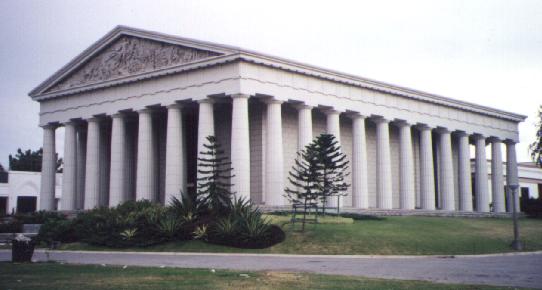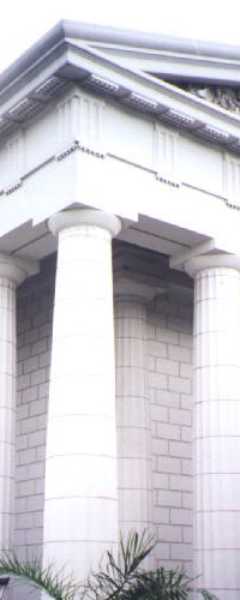

At close of the period of transition represented by the 7th century BC, Greek architecture rediscovered the monumental character it had lost since the Mycenaean period. In the sanctuaries great stone buildings replaced light structures. Changing materials and standardization of design went hand in hand; on the sometimes hazardous experiments of the 7th century there followed a period of solidation when the two Orders, Ionic and Doric, destined o establish the language of Greek architecture for the remainder of his history , were defined.
The beginnings of the Doric Order are better documented than those of the Ionic Order through some archaeological good luck which has made it possible to follow the stages of its development in the continental and western regions of the Greek world (Peloponnese, central Greece, Corfu, southern Italy and Sicily). The role of Corinth and Argos in this phase of development seems to have been considerable: the first buildings in which Doric elements appeared, at Thermos, Olympia and Corfu, were all situated in regions dominated by the centers of the high Archaic period.
The plan of the Doric temple originated in the megaron plan
found in continental Greece since the 3rd millennium, but it was expanded
to the rear of the central hall (naos or cella) where the cult statue was
displayed, by the addition of an opisthodomos reduplicating the entry
vestibule.


MAJOR CHARACTERISTICS OF A DORIC:
PEDIMENT- from the Latin "pedare" meaning to support, a triangular piece of wall above the entablature which fills in and supports the sloping roof.
REGULA- short band under the triglyph to which the guttae are attached.
ENTASSIS- optical illusion percieved only in a doric column
curving outwards
or tapering slightly convex profile
ECHINUS + ABACUS- capital
ABACUS- square unmolded slab; crowns the echinus.
TENIA- with 3 upright channels and corresponding to this is a narrow band called the regula with 6 guttae (small cornical drops).
METOPES - square spaces often ornamented with groups of fine sculpture.
CORNICE - upper or crowning part.
CAPITAL - the Latin word "caput" meaning head
*crowning feature of a column or pilaster
NECKING - the space between the astragal of the shaft and the commencement of the capital proper.
STYLOBATE - in classic architecture, the upper step forming a platform on which a colonnade is placed.
CREPIDOMA - collective term used for the three steps of a doric temple.